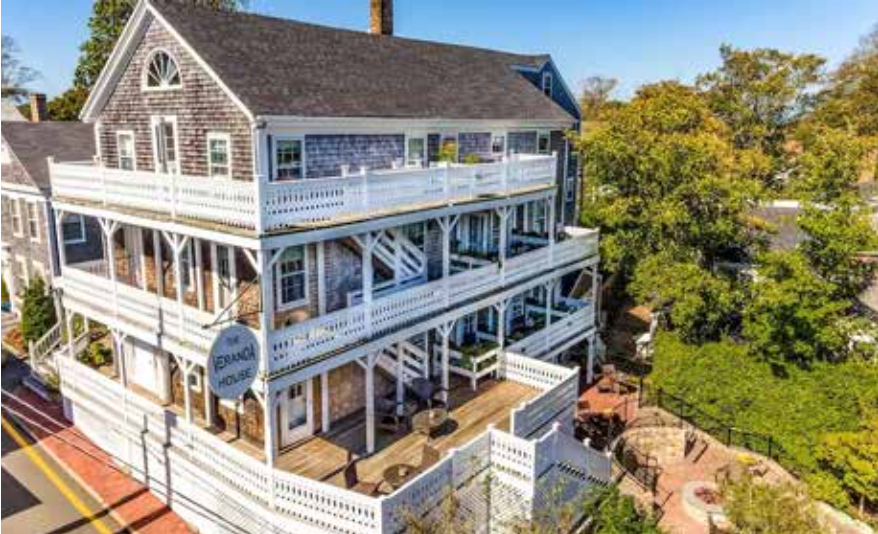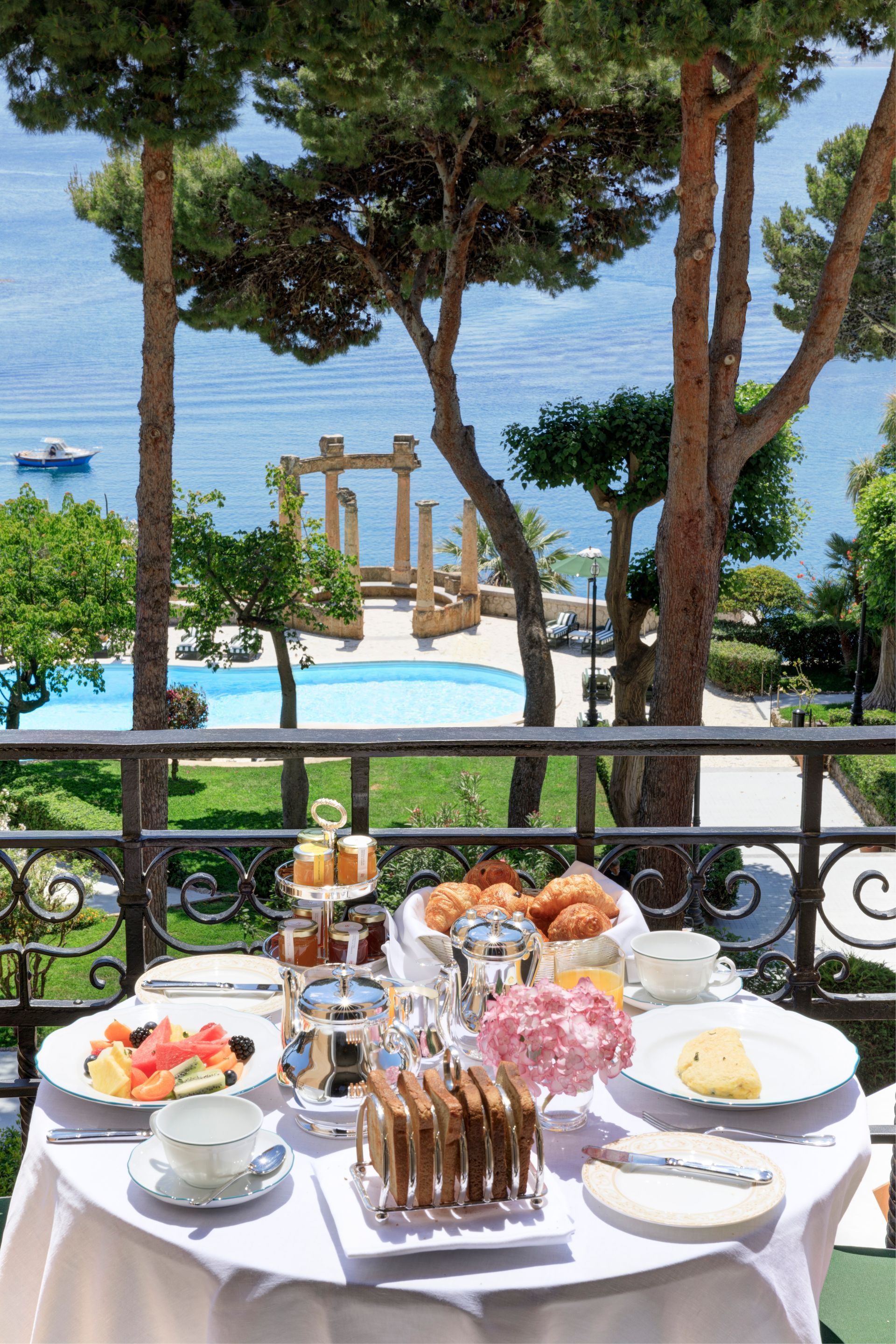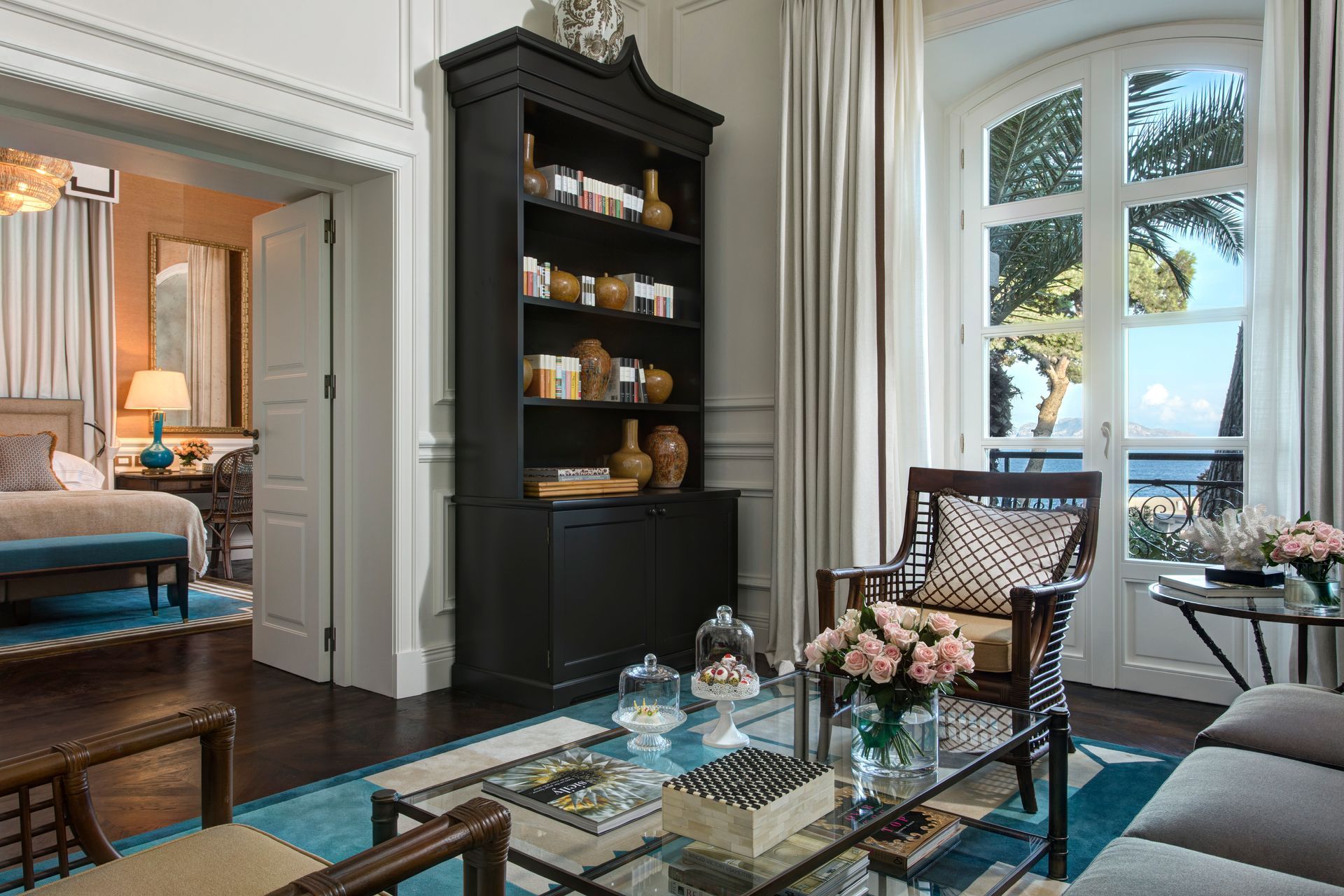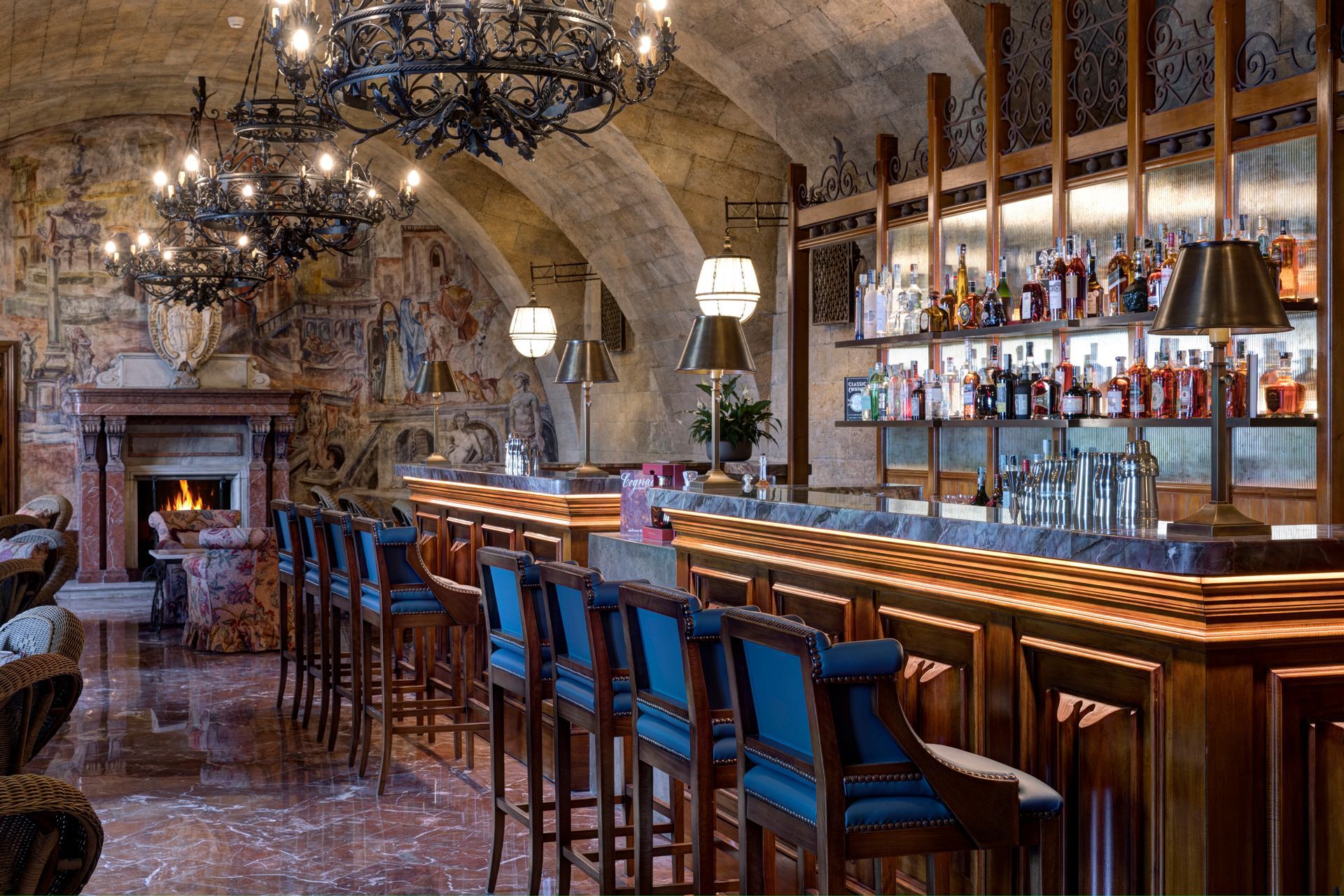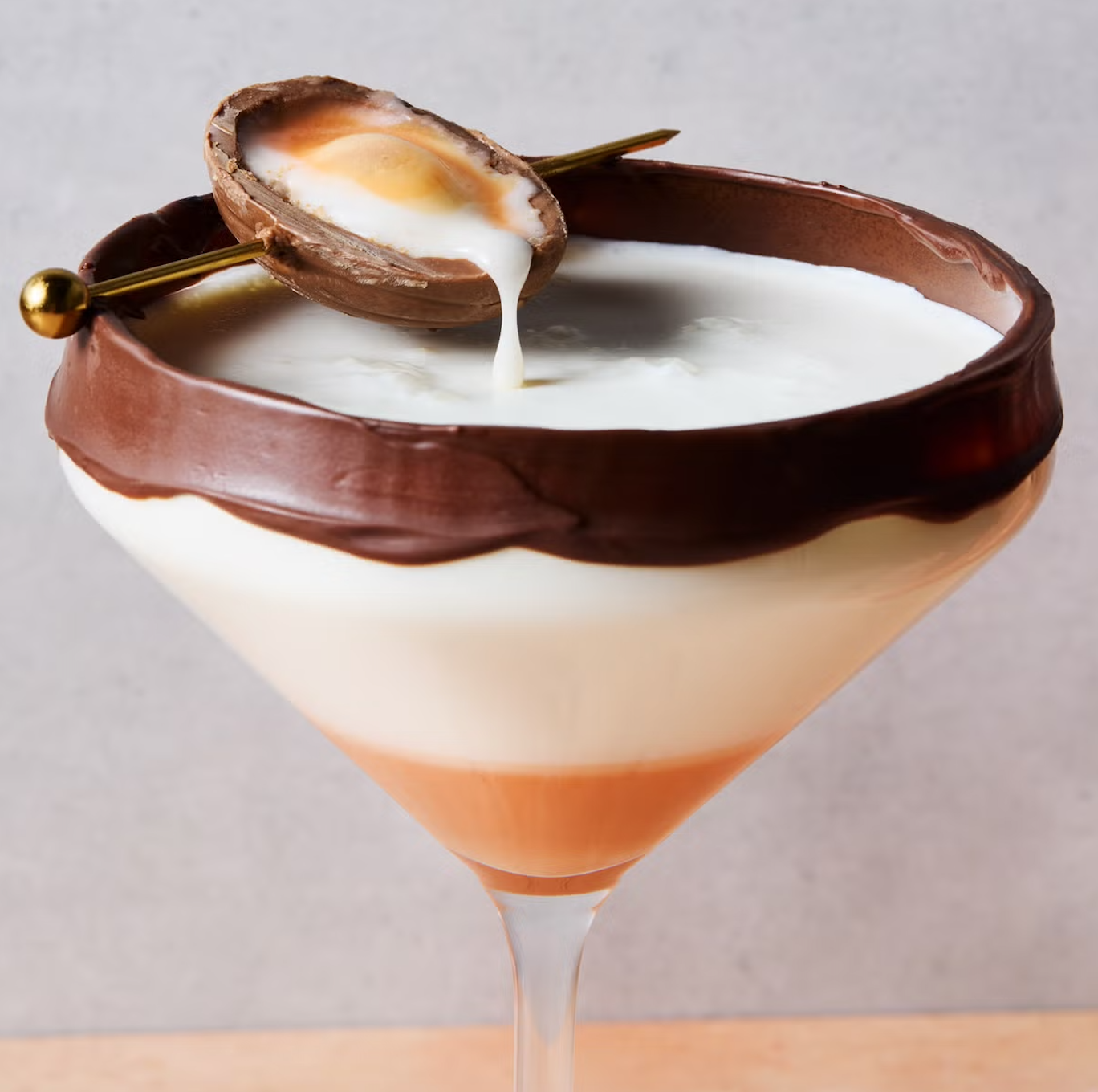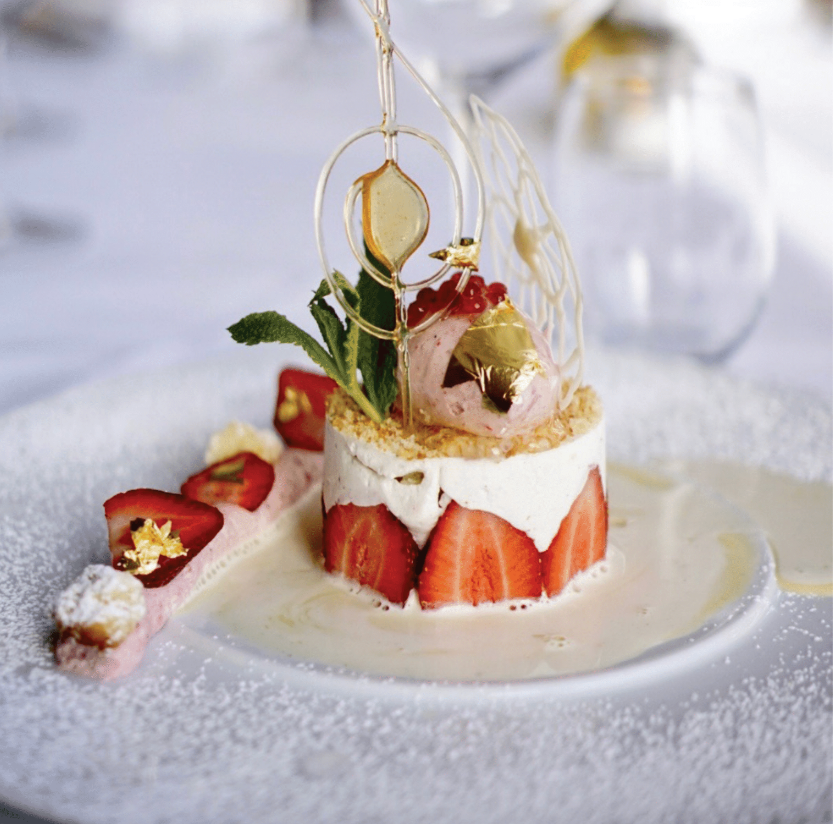Sicilian Splendor in a Fashionable Fabled 19th Century Palazzo
A world-class hotel revived by Rocco Forte to its former splendor, sharing old and new.
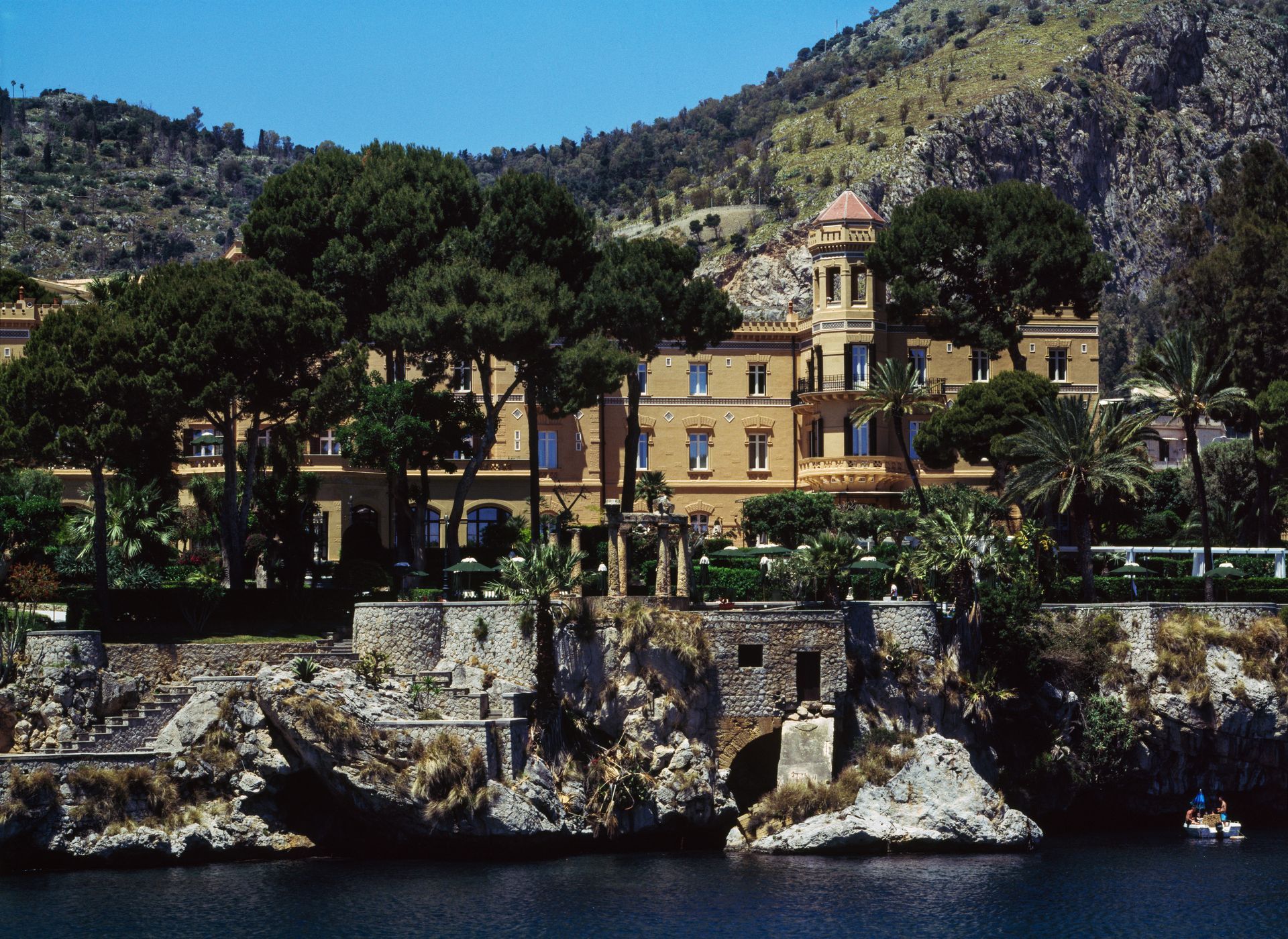
Sicily is just too big an island to cover in a week. I suggest going to Western Sicily (as I chose) with Palermo, where one airport is (with Monreale) and then the southwest (with Agrigento).
There’s much to see within the bustling city of Palermo, especially in the old town, which felt heady, exuberant, and theatrically baroque. Not to miss are the Norman Palace (with its stunning Cappella Palatina), the Fontana Pretoria, and the baroque churches (of which the Gesu and La Martorana are very special). Somewhat neglected is the Teatro Massimo, with its royal box and echo chamber all redolent of the Liberty years of the Belle Epoque. The Cathedral with palm trees outside is a wonderful combination of Norman, Moorish, and Gothic architecture. I particularly recommend the 10,000 ceramic tiles in Rooms at the Museum of Majolica Genius (open only between 3 and 5 p.m.).
Stunning positioned along the coast, looking out across the bay and fifteen minutes from the city center, is the majestic Villa Igiea www.roccofortehotels.com/villa-igiea. Rocco Forte revived this world-class hotel to its former splendor. Originally designed to be approached from the water, the villa had its sand-colored, crenelated façade extended to become a hotel. The Villa Igiea’s literature hails itself as a “small corner of Sicilian paradise,” and unquestionably, it has maintained all the glamour of its 1920s heyday. Swallows swoop over tiered lawns, terraces, and pathways are lined with scented jasmine and immaculate topiary. The pool, set beside an original Greek ‘tholos’ temple, has a peaceful, airy expanse amid the soothing sound of yachts either on the move or tingling their masts.
The public rooms are sublime. There’s an impressive, vast ballroom, and there’s the Art Nouveau, or Liberty Style, as Italians say, Sala Basile, with mural frescoes of languid maidens amongst meadows. And there’s my favorite: the splendid Florio dining room with its potted plants and light blue wicker chairs around beautifully spaced tables. Of the 78 rooms (starting from €620 per night), mine felt brand new: so high was the quality of its finishing. So crisp and classic the décor. It had stunning views over the garden, the yachts in the marina, the glinting sea, and the misty mountains. Come evening, the drinks on the terrace felt sophisticated and romantic. It’s best to dine al fresco on the outdoor terrace if possible, and at night, it’s beautifully lit as a pianist performs from the vaulted bar. As I dined, I was lucky enough to witness a wonderful reflection of the full moon across the water.
Five miles south is Monreale, a picturesque town that’s charming and attractive. It’s set on the slope of Monte Caputo and overlooks the fertile ‘conca d'oro’ (Golden Shell), described by Oscar Wilde as “the exquisite valley that lies between two seas.” It’s home to orange, olive, and almond trees, whose produce is widely exported. With its gorgeous Arab, Byzantine, and Norman influences, the cathedral has to be seen, for it’s a testament to the human spirit and a glorious homage to Christ, whose giant face looks down in his golden apse over the altar and congregation. Through the interior are intricate mosaics of biblical scenes, and there’s so much wonder to absorb in wandering around the cloister with its palm and olive trees encircled by columns with a multitude of different mosaics and carvings.
I left the mosaics of Monreale to journey around the patchwork of fields inland. With rugged mountains in front of further mountains as an extra backdrop, the scenic views swept, undulating, and dramatically, twenty miles or more. Such a contrast between wild contours and cultivated land. It’s rich in volcanic rock and ash, producing extremely fertile soils. There are abundant olive groves in a landscape speckled with vineyards. The orchards of orange trees were so compact in their fight for light. All joyously fertile and yielding. The meadows of intoxicating wildflowers of many colors seemed as though a rainbow had descended on earth. It left me wondering how nature could be so pretty. I left feeling how one Sicilian proverb has it: “Li ricchi cchiù chi nn'hannu, cchiù nni vonnu.” (“The more you have, the more you want”).
